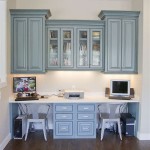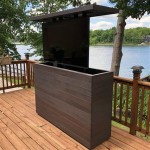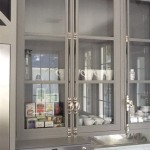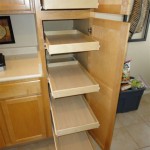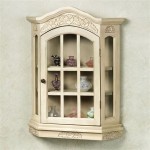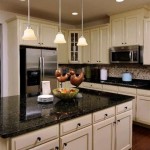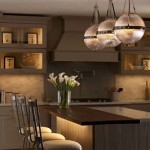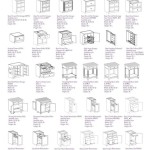What Are The Best Hinges For Kitchen Cabinets?
Selecting the appropriate hinges for kitchen cabinets is a crucial element of any kitchen renovation or construction project. Hinges are responsible for the functionality, durability, and even the aesthetics of cabinet doors. Choosing the right hinge ensures smooth operation, proper alignment, and extends the lifespan of the cabinets. The optimal choice depends on several factors, including the cabinet style, door weight, desired level of adjustability, and the overall budget.
Different types of hinges cater to various needs, each offering unique features and benefits. Understanding these options is key to making an informed decision. This article will explore the most common and effective hinge types for kitchen cabinets, detailing their characteristics and applications to assist in selecting the ideal hardware.
Concealed Hinges: The Invisible Champion
Concealed hinges, also known as European hinges, are the most popular choice for modern kitchen cabinetry. Their defining characteristic is their ability to be completely hidden when the cabinet door is closed, offering a clean and seamless aesthetic. This is achieved by mounting the hinge inside the cabinet frame and door, leaving no visible hardware on the exterior surface. Concealed hinges offer a high degree of adjustability, allowing for precise alignment of the door in multiple directions – vertically, horizontally, and in depth.
These hinges typically feature a cup that is mortised into the back of the cabinet door and an arm that attaches to the cabinet frame. The two components are connected via a mechanism that allows the door to swing open and closed. Concealed hinges are available in a range of opening angles, including 95, 110, 170, and even 270 degrees, providing flexibility in design and accessibility. The wider the opening angle, the easier it is to access the contents of the cabinet.
A significant advantage of concealed hinges is their self-closing mechanism. Many models incorporate a spring-loaded system that gently and automatically closes the door when it is within a certain range. This feature prevents doors from being left ajar and contributes to a tidy and organized kitchen appearance. Soft-close hinges take this a step further by using a hydraulic or pneumatic damper to slow the closing speed, preventing slamming and minimizing noise. This is particularly desirable in homes with young children or in open-concept living spaces.
Concealed hinges are generally more expensive than other types of hinges, but their superior functionality, adjustability, and aesthetic appeal make them a worthwhile investment for many homeowners. Installation requires precision and may involve using specialized tools, such as a hinge-boring jig. However, the benefits of concealed hinges, including their hidden appearance and smooth operation, often outweigh the initial investment and installation effort.
The selection of concealed hinges also extends to different types of mounting. Face-frame hinges are designed for cabinets with a visible face frame around the cabinet opening, while frameless hinges are specifically designed for cabinets without a face frame, also known as European-style cabinets. Each type has a slightly different design to accommodate the specific construction of the cabinet.
Butt Hinges: The Traditional Choice
Butt hinges are a classic and traditional hinge type that has been used for centuries. They consist of two rectangular leaves connected by a central pin. One leaf is mortised into the cabinet frame, and the other is mortised into the cabinet door. When the door is closed, the two leaves align, creating a flush surface. Butt hinges are known for their simplicity, durability, and relatively low cost.
Unlike concealed hinges, butt hinges are visible when the cabinet door is closed, which contributes to their traditional aesthetic. They are available in a variety of finishes, including brass, nickel, bronze, and stainless steel, allowing them to complement a range of cabinet styles. The size of the butt hinge is determined by the thickness and weight of the door. Heavier doors require larger and stronger hinges to ensure proper support and prevent sagging.
Butt hinges can be either plain bearing or ball bearing. Plain bearing hinges rely on a simple metal-on-metal contact between the leaves, while ball bearing hinges incorporate small ball bearings between the leaves to reduce friction and provide smoother operation. Ball bearing hinges are generally preferred for heavier doors as they offer improved performance and longevity. The use of ball bearing hinges can significantly improve the feel of the door opening and closing.
Installation of butt hinges requires precise mortising to ensure a flush and even surface. Improper mortising can lead to misalignment and difficulty in closing the door. It is essential to use a sharp chisel or router and to carefully measure and mark the mortise locations. While simple in design, exact installation is vital for optimal functioning. The alignment of the hinge within the mortise is paramount to ensure the door swings freely and closes correctly.
Although butt hinges do not offer the same level of adjustability as concealed hinges, they are still a viable option for many kitchen cabinet applications. They are particularly well-suited for traditional or vintage-style kitchens where their visible hardware complements the overall aesthetic. Their durability and cost-effectiveness make them a practical choice for homeowners on a budget or for those who prefer a classic look. Remember that the correct size and number of butt hinges needs to be suited to the size and weight of the cabinet door for best performance.
Wrap-Around Hinges: Ease of Installation and Surface Mounting
Wrap-around hinges offer a unique approach to cabinet door attachment, prioritizing ease of installation and the option for surface mounting. Instead of requiring mortises to be cut into the cabinet frame, wrap-around hinges feature a design that 'wraps' around the edge of the frame, securing with screws. This simplifies the installation process, making it a suitable choice for DIY projects or situations where precise mortising is challenging.
The design of wrap-around hinges often includes a longer leaf that extends along the inside of the cabinet frame, providing increased stability and load-bearing capacity. These hinges are available in various sizes and gauges of metal to accommodate different door weights and thicknesses. The wrap-around design also contributes to a more secure attachment, as the screws are distributed over a larger surface area.
Surface-mounted hinges, a type of wrap-around hinge, provide the ultimate ease of installation. They require no mortising at all, attaching directly to the surface of both the cabinet frame and the door. This makes them a popular choice for retrofitting existing cabinets or for projects where time and effort are a primary concern. While surface-mounted hinges are visible when the door is closed, they can still be selected in finishes that complement the cabinet hardware and overall design.
Wrap-around hinges are not typically known for their high degree of adjustability compared to concealed hinges. However, some models do offer limited adjustability to fine-tune the alignment of the door. The primary focus of wrap-around hinges is on their simplicity and ease of installation. Their affordability also makes them an attractive option for budget-conscious homeowners.
While wrap-around hinges may not offer the sleek, hidden appearance of concealed hinges, their practical advantages make them a valuable option for many kitchen cabinet applications. They are especially suitable for situations where ease of installation, affordability, and surface mounting are prioritized over aesthetics or adjustability. The robust design means they can stand up to regular use, making them a long-lasting choice for cabinet doors that see frequent use. Selecting different finishes allows for the hardware to blend with the style of the kitchen.
Specialty Hinges: Solutions for Specific Needs
Beyond the common hinge types, a variety of specialty hinges cater to specific cabinet design and functionality requirements. These hinges address unique challenges, such as inset doors, corner cabinets, or doors with extra-wide opening angles. Understanding these specialty options can significantly enhance the design and usability of a kitchen.
Inset hinges are specifically designed for cabinets where the door sits flush with the cabinet frame when closed. This creates a clean, streamlined look that is often found in high-end kitchen designs. Inset hinges require precise installation and adjustment to ensure that the door aligns perfectly with the frame. Different types of inset hinges are available, including full inset, half inset, and 3/8-inch inset, each designed for a specific door overlay.
Corner cabinet hinges are designed to allow access to the hard-to-reach corners of kitchen cabinets. These hinges often feature a wider opening angle than standard hinges, allowing the door to swing clear of the adjacent cabinet. Lazy Susan hinges are a type of corner cabinet hinge specifically designed for cabinets with a rotating Lazy Susan shelf. These hinges allow the door to swing independently of the shelf, providing easy access to the contents.
Bi-fold hinges are used to create bi-fold cabinet doors, which fold in half when opened. This is a useful solution for cabinets in tight spaces where a full-size door would obstruct the walkway. Bi-fold hinges can also be used to create a more open and accessible cabinet interior. These hinges require careful alignment to ensure smooth and even folding of the door panels.
Pivot hinges are a unique type of hinge that allows a door to pivot around a central point. These hinges are often used for cabinet doors that are designed to swing open in both directions. Pivot hinges offer a minimalist aesthetic and are particularly well-suited for contemporary kitchen designs. The clean lines and movement add a unique element to the cabinets.
Self-closing hinges are available in various styles, not just concealed hinges. These hinges incorporate a spring mechanism that automatically closes the door, preventing it from being left ajar. Self-closing hinges are particularly useful for cabinets that store frequently used items, as they ensure that the door is always closed, keeping the contents tidy and protected.
Selecting the appropriate specialty hinge requires careful consideration of the specific cabinet design and functionality requirements. Consult with a cabinet maker or hardware professional to ensure that the chosen hinge is compatible with the cabinet construction and will provide the desired performance. The right hinge can greatly improve the functionality and aesthetic appeal of even the most challenging cabinet designs.

What Are The Best Kitchen Cabinet Hinges Titus

The Ultimate Guide To Kitchen Cabinet Hinges

The Best Hinges For Cabinets And Furniture Maxave

Kitchen Cabinet Door Hinges Pictures Options Tips Ideas

The Best Hinges For Cabinets And Furniture Maxave

The Best Hinges For Cabinets And Furniture Maxave

21 Types Of Cabinet Hinges Explained

Benefits Of Soft Close Self Closing Hinges For Your Kitchen

Liberty Matte Black Self Closing Overlay Cabinet Hinge 5 Pairs H0103bl Fb Sp The Home Depot

The Best Hinges For Cabinets And Furniture Maxave
Related Posts

